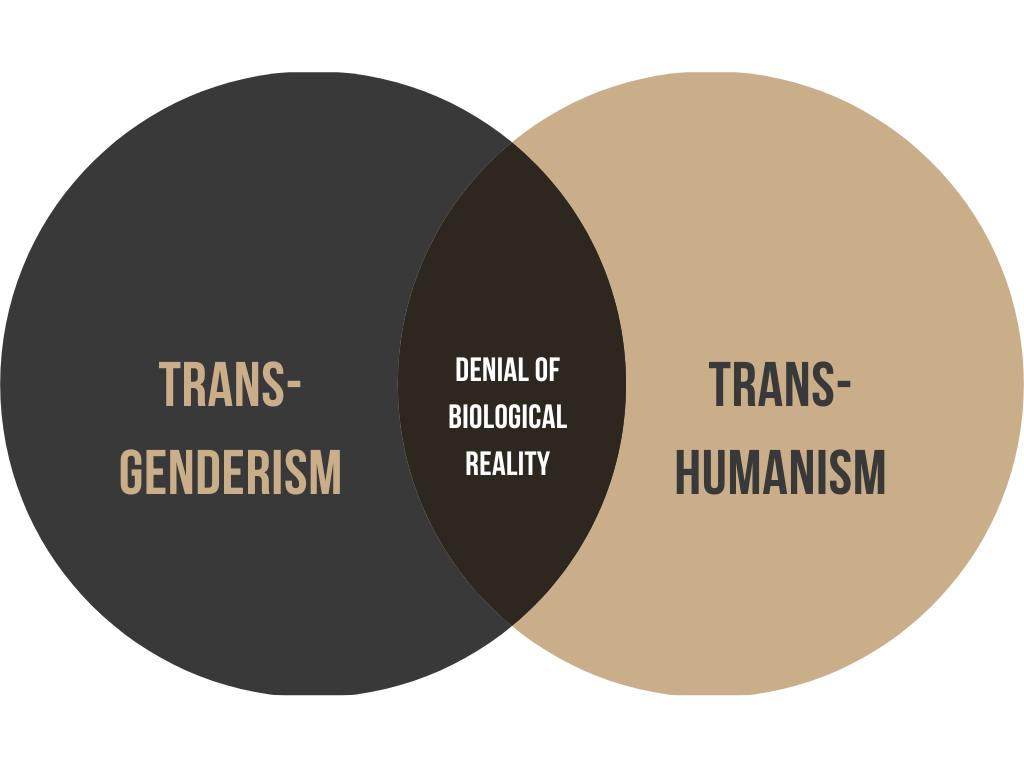Transgenderism, Transhumanism and the Bible's Better Story
Why the Church Must Have a Strong "Body Theology" in 2025 and Beyond

The Problem
Rewind to 2015
On April 24, 2015, in an interview with Diane Sawyer, Bruce Jenner — the well-know athlete, Olympian, and T.V. personality — revealed his new identity as a female named Caitlin. And it was just a few days later that the Supreme Court case Obergefell vs. Hodges got underway on April 28th. Its decision in June of that same year ruled that same-sex couples had a constitutional right to marriage. This ruling opened up a Pandora’s Box of various gender “identities” and sexual expressions which caused quite a cultural stir. Remember when all anyone could talk about was the bathroom debacle at Target?
I think it’s safe to say that 2015 marked a watershed in American culture. And I also think it’s safe to say that if you’d never heard the term transgenderism before then, you have by now.
Fast-Forward to 2025
Fast-forward 10 years and it seems that we’re on the cusp of another cultural watershed: the massive push from the tech industry to integrate every facet of our lives with Artificial Intelligence.
One strand of this push is for human beings to one day literally merge with A.I. via brain chips. It sounds Sci-Fi, I know, but on January 30th 2024, Elon Musk’s company, Neuralink, implanted its first brain chip in a human subject. And now more studies on its safety and effectiveness have begun at the University of Miami’s Miller School of Medicine.
The short term goal is for this technology to help people suffering from paralysis to regain greater independence. I’m speaking way above my pay grade here, but as best I can understand it, the brain will send electronic signals to the Neuralink software which will then issue the command to an iPhone, laptop, or even robotic body parts.
The long term goal is for this chip to have broader availability to the general public. Imagine a future where we’re all controlling a variety of digital devices with our minds. No more fingers accidentally pressing the Q instead of the A key. Heck, we won’t even have to open our mouths to voice the text.
Technologies like this and others (such as Virtual Reality or Mind Uploading — the process of uploading our consciousness into a digital environment so that we can continue to “live” long after our physical bodies are dead and gone) can be grouped under the broader ideological / philosophical heading of transhumanism.
Okay, so here’s what I’m thinking —
There’s an interesting relationship between transgenderism and transhumanism. And even though these new realities may feel overwhelming to us, the biblical storyline is rich in resources to help us think well about both.
But here’s the problem: In many corners of contemporary Evangelicalism, I don’t think our view of salvation adequately takes that storyline into account.
So there you have it. In a nutshell, that’s what I’m thinking. Now let’s get some definitions in front of us.
Definitions
What is Transgenderism?
In his book God and the Transgender Debate, Andrew Walker offers a helpful definition of the term transgender:
“[It] is an umbrella term for the state or condition of identifying or expressing a gender identity that does not match a person’s genetic sex. It may mean dressing in the culturally determined dress of the gender that someone identifies with; it may involve someone having hormonal treatment to seek to bring their chemical balance into alignment with that gender; and it could include undergoing surgical treatment to alter their bodies. It may also mean not identifying as one gender all the time (which is often referred to as ‘gender fluid’) or not identifying as male or female at all (usually called ‘non-binary’ or ‘agender’).”1
Okay, now see if you notice any similarities with the definition of transhumanism below.
What is Transhumanism?
Britannica defines transhumanism as the…
“philosophical and scientific movement that advocates the use of current and emerging technologies—such as genetic engineering, cryonics, artificial intelligence (AI), and nanotechnology—to augment human capabilities and improve the human condition. Transhumanists envision a future in which the responsible application of such technologies enables humans to slow, reverse, or eliminate the aging process, to achieve corresponding increases in human life spans, and to enhance human cognitive and sensory capacities. The movement proposes that humans with augmented capabilities will evolve into an enhanced species that transcends humanity—the ‘posthuman.’”2
Did you spot anything? Both views are centered on the human body. And here’s why that’s important…
A Crucial Overlap, Sequence, & Story
There are three ways to describe the relationship between transgenderism and transhumanism: as an overlap, a sequence, and a story. So let’s take a look at each one.
The Overlap
At the heart of both transgenderism and transhumanism is a rejection of biological reality. Even though the aims seem categorically different, there’s an undeniable overlap at this juncture.
For the transgender person, there’s a conscious decision to assign greater importance to psychological feelings than the biological properties of the body.3
For the transhumanist, the human body is seen as outdated hardware that stands in need of a major upgrade — so major, in fact, that they hope for the day when we’ll actually become a different species! Hence the term “posthuman” in Britannica’s definition above.
But while there’s overlap, there’s also an important sequence to take note of.
The Sequence
I believe that transgenderism is laying the philosophical groundwork today that will help normalize transhumanist views tomorrow. Once we’ve all agreed that biological reality is a weight that may be safely jettisoned at will (transgenderism), why not merge our existence with digital and robotic augmentations (transhumanism). Or why not ditch them all together and upload our consciousness into a digital space and achieve immortality?
Such a sequence is the stock in trade of storytelling. A plot always moves forward through a series of narrative sequences. So the question we must ask is, what story is transgenderism and transhumanism telling? And following that one, why is the Bible’s story better?
Keep reading with a 7-day free trial
Subscribe to Into The Word with Drew to keep reading this post and get 7 days of free access to the full post archives.





